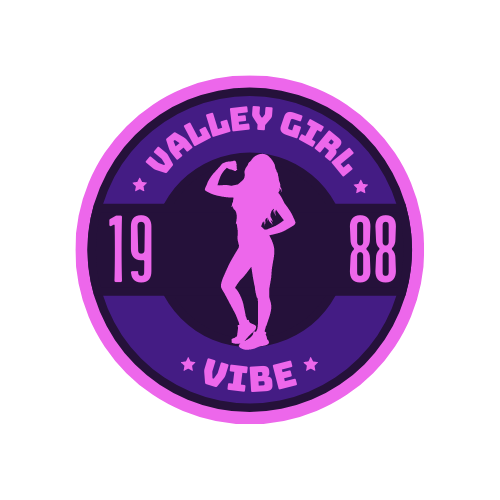Health trends often evolve, but you may notice that some fitness ideas from the past keep reappearing in modern workout routines. Understanding the cyclical nature of these anachronistic fitness trends can enhance your approach to health and wellness. By examining why and how these age-old practices return to the spotlight, you can gain valuable insights into their potential benefits and relevance in your contemporary fitness journey. This blog post will guide you through the fascinating ways past trends shape your current health landscape.
Key Takeaways:
- Anachronistic fitness trends often resurface due to nostalgia and a growing desire for holistic health approaches, promoting practices that emphasize well-being beyond just physical fitness.
- Modern technology plays a role in reintroducing these trends, as social media platforms and fitness apps allow for the rapid sharing and adaptation of historical practices like calisthenics, yoga, and martial arts.
- The blending of historical and contemporary fitness methods can lead to innovative workout regimens that cater to diverse audiences, appealing to both traditionalists and those seeking novel experiences in health and fitness.
The Concept of Anachronism in Fitness
To understand how anachronistic fitness trends influence modern health practices, it’s important to recognize their roots. These resurrected trends often serve as nostalgic echoes of past methodologies, merging historical wisdom with contemporary understanding. For an insightful overview of current fitness dynamics, check out Three Fitness Industry Trends + How Your Brand Can Face ….
Historical Perspectives on Fitness Trends
Among the earliest fitness trends, ancient practices such as calisthenics and yoga have seen remarkable comebacks. These exercises not only promote physical strength but also emphasize holistic wellbeing, echoing philosophies from centuries past that are now gaining renewed respect in today’s fitness landscape.
Cultural Influences on Fitness Resurgence
Fitness trends often resonate with broader cultural movements, leading to their resurgence. As societal values shift toward wellness and self-improvement, retro and traditional approaches to fitness become appealing options.
In fact, the revival of fitness trends from different cultures inspires a diverse array of practices that cater to your unique wellness journey. From the resurgence of traditional martial arts promoting discipline and mental clarity to the rise of dance fitness rooted in cultural celebrations, you have countless options to explore. These influences emphasize that fitness is not just about physical appearance; it’s also an expression of heritage and community, making your workout experience richer and more meaningful.
Case Studies of Anachronistic Fitness Trends
If you’ve ever wondered how historical fitness trends find their way back into modern wellness culture, you’re not alone. Analyzing the past can reveal significant insights. Here are several case studies that highlight this phenomenon:
- 1. Bodybuilding revival influenced by the Golden Era (1970s), with a 50% increase in gym memberships in the last decade.
- 2. The popularity of Muay Thai and boxing training, experiencing a 60% growth in participation rates since 2010.
- 3. Rise in outdoor calisthenics parks, with installations increasing by 40% in urban areas year over year.
- 4. Re-emergence of Pilates with a 35% uptick in studio offerings across the country.
The Return of Classical Training Methods
Studies show that classical training methods like weightlifting and gymnastics have made a significant comeback in recent years. Data indicates that these methods not only enhance physical fitness but also improve overall mental well-being. The re-integration of these practices into your routine could lead to increased strength and mobility, echoing benefits that previous generations experienced.
The Rise of Vintage Aesthetic Movements
Before you dismiss vintage fitness as a mere trend, consider its rising influence on modern aesthetics. As more individuals seek authenticity, vintage-inspired practices and styles are gaining ground.
Plus, the vintage aesthetic movements in fitness showcase an appreciation for simplicity and authenticity in workouts. You might find yourself drawn to the retro styles of yoga, dance, and strength training, as they emphasize form and community over high-tech gadgets. This growing interest reflects a desire for connection to a bygone era, reminding you that the essence of fitness lies not just in modern technology but also in timeless traditions.
The Role of Social Media in Fitness Trends
Once again, social media has become the breeding ground for fitness trends, allowing ideas to circulate and evolve at unprecedented speeds. Platforms like Instagram, TikTok, and YouTube serve as arenas for users to share workout routines, meal plans, and wellness tips. By showcasing personal stories and transformations, you gain easy access to an extensive range of fitness philosophies, many of which are inspired by practices from decades or even centuries past. The impact of these media can shape your health choices, subtly weaving historical elements into your modern fitness journey.
Viral Trends and Their Historical Roots
Below, trends that gain viral status often draw inspiration from historical fitness practices, bringing them back into the spotlight. For instance, the resurgence of interest in calisthenics or functional movement mirrors exercises once popularized by ancient warriors. As you encounter these viral trends online, it’s fascinating to see how they echo past practices, adapting them to contemporary lifestyles while fostering a sense of community and accountability among users.
Influencers and the Revival of Past Practices
Between the plethora of fitness influencers active today, many recognize the value of traditional methods, breathing new life into activities like yoga, tai chi, and even vintage workout styles like jazzercise. Through their platforms, you can discover insights and motivational stories that connect past practices with modern health goals. These influencers play a fundamental role in making age-old techniques relevant to your current fitness routine.
Influencers are instrumental in reshaping how you perceive and approach historical fitness practices. By leveraging their vast reach, they highlight the benefits of workouts rooted in tradition while incorporating a modern twist to make them appealing. Whether through simple social media posts or elaborate video tutorials, they demystify exercises that may seem outdated, allowing you to appreciate their relevance and effectiveness. As you explore the journeys of these influencers, you may find yourself inspired to embrace and integrate these revived practices into your own fitness regimen.
Psychological Factors Behind Fitness Resurgence
Despite shifts in societal norms and evolving health trends, the psychological factors that drive the resurgence of anachronistic fitness movements remain strong. You might notice a variety of influences, including:
- Nostalgia for simpler times
- A desire for authenticity in fitness
- The mental health benefits of engaging in physical activity
- The impact of social media on popularizing vintage workouts
This dynamic interplay of factors fosters a compelling environment for old-school fitness trends to thrive.
Nostalgia and Motivation
To tap into your motivations, understanding the role of nostalgia in fitness can be enlightening. You may find that the memories associated with past trends create a warm familiarity, inspiring you to adopt practices that echo your childhood or formative years.
Community and Belonging in Fitness Cultures
To cultivate a sense of belonging, participating in fitness movements rooted in community connection can be vital. You may discover that engaging in group activities or classes inspired by historical trends allows you to forge bonds with like-minded individuals.
Cultures centered around vintage fitness often foster a welcome sense of camaraderie that transcends time. You can benefit from the shared experience of rediscovering old-school techniques, which not only enhances your workout but also strengthens social ties. As you join enthusiasts in various settings—be it a retro aerobics class or a revival of traditional calisthenics—you enrich your fitness journey while establishing lasting friendships in a community that values both history and well-being.

Analyzing the Impact on Modern Health Practices
Not all anachronistic fitness trends seamlessly translate to today’s health practices. You may notice that while some ancient methods offer time-tested benefits, they often require adaptation to fit modern lifestyles. This influence can lead to a richer understanding of holistic wellness by blending traditional techniques with contemporary science, but it also poses questions about efficacy, safety, and practicality in today’s fast-paced world.
Integration of Old and New Fitness Modalities
Modern fitness enthusiasts are increasingly blending old and new modalities, creating a rich tapestry of health practices. You might find that techniques such as yoga or tai chi complement high-intensity interval training (HIIT), allowing for both mindfulness and physical conditioning. This fusion not only enhances your overall workout experience but also provides diverse benefits that target both the body and mind.
Challenges of Adopting Anachronistic Trends
Adopting anachronistic fitness trends can present various challenges that may impact your health journey. You may struggle with the initial learning curve of unfamiliar practices or feel hesitant to embrace traditional techniques that seem outdated. Cultural relevancy, access to resources, and personal preference can also affect how easily these trends integrate into your routine.
Challenges arise when attempting to adopt anachronistic fitness trends as they may not align with your current lifestyle or fitness goals. You might find that some traditional practices lack scientific backing or conflicts with modern health guidelines, leading to confusion. Additionally, access to skilled instructors or resources might limit your ability to implement these old-school methods effectively, making it crucial to evaluate their relevance in relation to your unique fitness journey.
Future Predictions for Fitness Trends
Keep an eye on the resurgence of traditional practices as they blend with modern science. Future fitness trends will likely prioritize holistic well-being, integrating elements like mindfulness and community engagement along with physical exercise. This combination aims not only for aesthetic goals but also for improved mental health and social connections. As awareness of sustainable practices grows, you can expect to see more fitness programs that emphasize longevity and lifestyle changes rather than quick fixes.
Sustainability of Anachronistic Practices
Beside the increasing interest in sustainability, fitness practices rooted in history are gaining traction. You may notice a shift towards eco-friendly workouts and natural movements that deepen your connection to the environment. These practices not only promote fitness but also champion the idea of preserving resources, making it possible for you to engage in a healthy lifestyle that respects the planet.
The Evolution of Fitness Ideals Over Time
An intriguing aspect of fitness trends is how ideals have transformed across generations. The focus on aesthetics has shifted from purely muscular physiques to a balanced approach that values health, mobility, and mental well-being. You may find that today’s fitness standards emphasize functional abilities, encouraging you to prioritize what your body can do over how it looks. This evolution reflects a more inclusive understanding of wellness, reminding you that fitness is not just about appearance but overall quality of life.
Fitness ideals have changed significantly over the decades, influenced by cultural, social, and technological shifts. In earlier times, the fitness focus often centered around strength and endurance, rooted in survival needs. As society transitioned, media portrayals began dictating aesthetic standards, leading to trends that prioritizes certain body types. Currently, you see a movement toward holistic fitness, which values mental health alongside physical health. This evolution illustrates that your fitness journey is personal and should consider your unique strengths and lifestyle preferences.
To wrap up
From above, it’s clear that anachronistic fitness trends often resurface and influence modern health by blending nostalgic practices with contemporary wellness needs. You may find that these time-honored methods can provide fresh perspectives on your fitness routine, drawing from the wisdom of the past while addressing today’s challenges. By exploring these trends, you can enrich your understanding of health and wellness, incorporating elements that resonate with your values and lifestyle. Embracing this fusion can not only enhance your physical fitness but also foster a deeper connection to the history of health practices.





